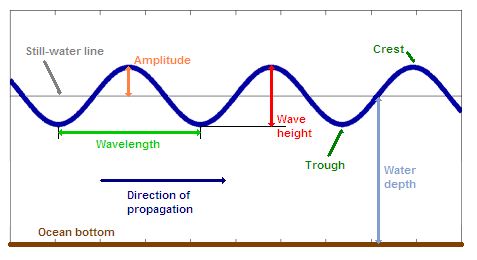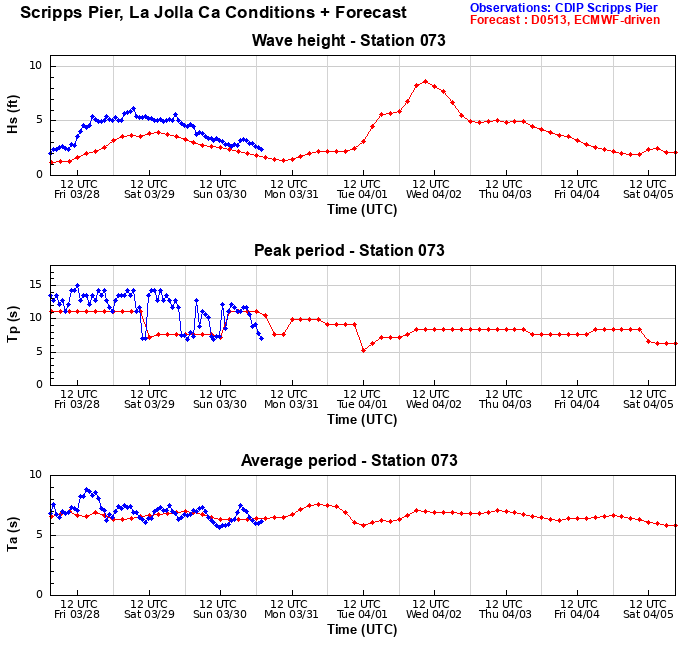
Take a friend to check out a break, and you are likely to disagree on the wave height. What some will say is 4-5ft, others will call 2-3ft. So how do we measure the height of waves that are breaking?
It is easier to start with unbroken waves, where the wave height is the vertical distance from peak to trough. In other words, this is twice the amplitude for perfect sinusoidal waves. Oceanographers use the concept of significant wave height (Hs or H1/3) when reporting measurements. This statistical approach takes the average height of the highest third of all waves measured over a time period. When your forecast says 6-foot waves, it's referring to this significant wave height—meaning you'll encounter plenty of 4-5 footers and the occasional 8-foot set that seems to single you out when you’re on the inside.
Offshore of surf breaks, where the wave buoys of the world tend to reside, measurements are straightforward: how much has the buoy moved up and down as the wave passed? These floating sensors track their vertical displacement as waves roll through, transmitting data to shore stations or storing it for later pickup.

In the surf zone, measurement gets more complicated. Buoys that reside there tend to go over the falls and are not very effective. The waves become much more nonlinear, with tall, narrow peaks and drawn-out troughs. In this case, the amplitude is defined differently and the wave height is no longer a simple multiple of two. As waves begin to break, their structure changes, creating steep faces that make height estimation even trickier.
Accurate measurement of breaking waves generally requires tools like pressure sensors or sounders affixed to structures. Take the pressure sensor from the Scripps Pier in San Diego as an example. It records the wave height by measuring how water weighs down on it and creates pressure—more water above means higher pressure readings. These provide great data, but unless you're shooting the pier, it's difficult to know exactly how high the wave was where you were riding it.

While these fixed-point measurements offer valuable insights at specific locations, scientists need broader coverage to understand wave dynamics across entire coastlines. Modern wave measurement systems have evolved beyond traditional buoys. Satellite altimetry can measure changes in sea surface height from space, while coastal radar systems scan water surfaces to track wave patterns. These technologies provide broader coverage but still struggle with the complex dynamics of the surf zone where waves transform dramatically and quickly.
The subjective nature of wave height perception stems from the same difficulty in objective measurement. Your position relative to the wave dramatically affects how you perceive its size—from the shoulder, a wave appears smaller than when you're looking up at its face from the trough. Add in the psychological component where fear magnifies perceived size, and it's no wonder a wave might be described as "double overhead" by the person who wiped out on it and "chest high at best" by the local who watched from his Astro Van. Even photographers struggle with this—wide-angle lenses make waves look smaller, while telephoto compression can turn ripples into monsters. If a wave looks big on a GoPro, it’s BIG.
For practical purposes, you don't need to know exactly how tall a wave is to ride it. The catch-all terms of head-high and overhead convey the message to others well enough for most purposes. Head-high, surprisingly, is about head height.
Further Reading:









I think the most accurate measurement of waves is increments of fear. Not sure who said it but if its huge, no chance i'm paddling out 😂😂